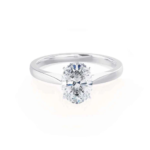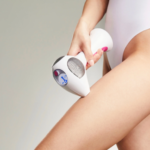The best home gym isn’t the one with the most equipment—it’s the one specifically designed to help you achieve your personal fitness goals. Whether you’re aiming to build strength, improve endurance, lose weight, or enhance athletic performance, creating a customized home fitness space can be more effective than even the most well-equipped commercial gym.
Why One-Size-Fits-All Gyms Fall Short
Commercial gyms try to cater to everyone, which means they often excel at nothing in particular:
- Equipment selected to appeal to the broadest audience
- Space limitations for specialized training zones
- Generic layouts that don’t support specific training methodologies
- Limited options for sport-specific training
- Restricted ability to customize your workout environment
In contrast, your home gym can be a precision tool designed to deliver exactly what you need.
Identifying Your Fitness Goals
Before purchasing a single piece of equipment, clarity about your objectives is essential. Consider these common fitness goals and their distinct requirements:
Strength and Muscle Building
- Primary focus:Progressive overload with sufficient resistance
- Training style:Compound movements, adequate rest between sets
- Recovery needs:Proper warm-up/cool-down space, possibly mobility tools
Weight Management and Fat Loss
- Primary focus:Caloric expenditure and metabolic conditioning
- Training style:Circuit training, limited rest periods, varied movements
- Recovery needs:Heart rate monitoring, hydration station
Cardiovascular Health and Endurance
- Primary focus:Sustained elevated heart rate with appropriate progression
- Training style:Steady-state cardio, interval training, or combination
- Recovery needs:Ventilation, cooling system, heart rate recovery monitoring
Sport-Specific Performance
- Primary focus:Movement patterns that transfer to your chosen activity
- Training style:Sport-specific drills, conditioning relevant to your sport
- Recovery needs:Tools specific to your activity’s common injury sites
Functional Fitness and Longevity
- Primary focus:Movement quality across different planes of motion
- Training style:Varied movement patterns, balance challenges, mobility work
- Recovery needs:Stretching space, mobility tools, balance equipment
Hybrid Goals
- Most people have multiple fitness objectives that can be prioritized and addressed with thoughtful gym design
Equipment Selection Based on Your GoalsFor Strength and Muscle Building
Essential Equipment:
- Power rack or squat stand with safety bars
- Barbell and weight plates (Olympic style preferred for versatility)
- Adjustable bench (flat/incline/decline)
- Dumbbells (adjustable or fixed set)
- Appropriate gym flooringfor heavy loads
Valuable Additions:
- Cable machine or functional trainer
- Specialty bars (trap bar, safety squat bar)
- Resistance bands for assistance/resistance
- Pull-up bar or station
- Mirrors for form checking
Space Considerations:
- Ceiling height for overhead movements
- Platform area for Olympic lifts if relevant
- Storage solutions for plates and accessories
For Weight Management and Fat Loss
Essential Equipment:
- High-intensity interval training (HIIT) tools
- Space for circuit training
- Versatile cardio option (rower, air bike, etc.)
- Interval timer or clock
- Recovery area
Valuable Additions:
- Battle ropes
- Kettlebells in various weights
- Medicine balls
- Jump rope
- Suspension trainer
Space Considerations:
- Open floor space for dynamic movements
- Multiple stations for circuit transitions
- Good ventilation and cooling
For Cardiovascular Health and Endurance
Essential Equipment:
- Primary cardio machine aligned with preferences (treadmill, bicycle, rower, etc.)
- Heart rate monitoring capability
- Entertainment system for longer sessions
- Proper ventilation
- Hydration station
Valuable Additions:
- Secondary cardio options for cross-training
- Interval timing system
- Incline options (treadmill elevation, stairs, etc.)
- Cooling system (fans, air conditioning)
- Recovery tools for endurance athletes
Space Considerations:
- Stable flooring for machine safety
- Electrical requirements for powered equipment
- Sound considerations for longer usage
For Sport-Specific Training
Essential Equipment:
- Tools that replicate key movement patterns in your sport
- Sport-appropriate conditioning equipment
- Specific strength developers for your sport’s demands
- Video capability for technique assessment
- Relevant recovery tools
Examples by Sport:
- Tennis:Medicine ball wall, agility ladder, forearm strengtheners
- Running:Treadmill, foam rollers, resistance bands for hip strength
- Football:Agility equipment, push sled, plyometric platform
- Golf:Rotation trainers, balance equipment, specific stretching area
- Climbing:Fingerboard, pull-up station, core strength area
Space Considerations:
- Movement-specific clearance
- Sport-appropriate flooring
- Technology placement for technique review
For Functional Fitness and Longevity
Essential Equipment:
- Multi-planar movement tools
- Balance and stability equipment
- Mobility enhancers
- Light resistance options
- Comfortable floor space for groundwork
Valuable Additions:
- Stability ball
- BOSU or balance boards
- Foam rollers and massage tools
- Yoga props
- TRX or suspension system
Space Considerations:
- Open area for movement exploration
- Comfortable flooring for floor-based exercises
- Peaceful environment for focus
Creating a Goal-Oriented Layout
Your equipment arrangement should reflect your training priorities:
Workflow-Based Design
- Arrange equipment to support typical workout sequences
- Create zones that match your training splits
- Position complementary tools near each other
- Ensure transitions between exercises are efficient
Primary Focus Positioning
- Place your most essential equipment in the prime real estate
- Position key training areas where lighting and visibility are best
- Ensure your most-used equipment has adequate space around it
The 80/20 Principle Applied
- Dedicate 80% of your space to the 20% of exercises that deliver your core results
- Don’t sacrifice effectiveness of primary movements for variety’s sake
Adapting Space Constraints to Your Goals
Different fitness goals can work within various space limitations:
Minimal Space Solutions (Under 50 square feet)
- Strength focus:Wall-mounted folding rack, adjustable bench, dumbbells
- Cardio focus:Compact rower or foldable treadmill, jump rope
- Functional focus:Suspension trainer, resistance bands, floor space
Medium Space Optimization (50-100 square feet)
- Strength focus:Half rack, barbell setup, adjustable bench, dumbbell zone
- Cardio focus:Primary cardio machine, HIIT station, recovery corner
- Functional focus:Movement zone, stability station, weight area
Dedicated Room Benefits (100+ square feet)
- Separate zones for different training modalities
- Uncompromised equipment selection
- Better temperature and environment control
- Potential for multiple training stations
Technology Integration for Goal Achievement
Strategic technology can enhance goal-specific training:
Tracking and Measurement
- Heart rate monitors for cardiovascular goals
- Force plates for power development
- Motion sensors for technique refinement
- Smart scales for body composition goals
Guidance and Programming
- Training-specific apps displayed on mounted tablets
- Form-checking camera setups
- Smart mirrors for real-time feedback
- Programmed lighting for interval training
Recovery Tools
- Percussion massage devices
- Compression systems
- Temperature therapy options
- Mobility assessment technology
Personalizing Your Environment for Motivation
The psychological aspects of your space can be as important as the equipment:
Goal Visualization
- Progress tracking displays
- Visual representations of goals
- Before/during/after documentation
- Performance metrics dashboards
Atmosphere Customization
- Lighting that energizes or focuses based on training type
- Sound system calibrated to your preference
- Color schemes that promote your training mindset
- Inspirational elements meaningful to you personally
Progression Planning in Home Gym Design
Your fitness goals will evolve—your gym should be able to grow with you:
Modular Approach
- Start with fundamental equipment for your primary goal
- Add specialized tools as you advance
- Create expansion zones in your initial layout
- Choose equipment systems that allow for additions
Investment Prioritization
- Allocate budget based on goal hierarchy
- Invest more in equipment central to your primary objectives
- Choose quality over quantity for core movements
- Consider rental or temporary options for experimental additions
Real Examples of Goal-Oriented Home GymsCase Study: Mark’s Strength Sanctuary
“After years of generic training, I identified that strength was my true priority. I converted my garage into a powerlifting-focused space with a competition-grade power rack, calibrated plates, and specialized bars. My bench press improved more in six months than it had in the previous three years at a commercial gym.”
Case Study: Sarah’s Endurance Studio
“Running is my passion, but English weather is unpredictable. I created a cardio-centered space with a quality treadmill, heart rate monitoring displays, and proper ventilation. I’ve added a rowing machine for cross-training and a dedicated recovery corner. My marathon times have improved consistently since making this investment.”
Case Study: David’s Functional Fitness Corner
“At 65, my goals revolve around maintaining mobility and independence. My modest 80 square foot setup includes balance equipment, resistance bands, and comfortable gym flooring for ground transitions. The wall-mounted TV guides me through appropriate routines, and everything stores compactly when not in use.”
Maintaining Focus While Allowing Evolution
The key to a truly effective home gym is balancing commitment to your goals with adaptability:
Regular Goal Reassessment
- Schedule quarterly reviews of your fitness objectives
- Evaluate how well your current setup supports these goals
- Make intentional adjustments rather than impulsive additions
Equipment Efficiency Audit
- Track which equipment delivers results versus which gathers dust
- Be willing to remove or replace underutilized items
- Focus on results rather than variety for variety’s sake
Training System Integrity
- Ensure additions complement rather than complicate your training approach
- Maintain the flow and function of your primary training methodology
- Resist trend-based additions that don’t serve your specific goals
Conclusion: Your Goals, Your Gym, Your Results
A home gym designed around your specific fitness goals isn’t just a collection of equipment—it’s a physical manifestation of your commitment to those objectives. By thoughtfully aligning your space, tools, and environment with what you truly want to achieve, you create a powerful system for success.
The most effective home gym isn’t the one that mimics a commercial facility—it’s the one purposefully designed to help you reach your particular fitness destination. Whether you’re lifting for strength, training for endurance, or moving for longevity, a goal-driven approach to home gym creation can transform not just your space, but your results.










